Index

Review: Superior auto-overclocking
So far, Nvidia launched two cards based on the GT106 GPU – the GTX 660 and GTX 650 Ti. Our today’s guest is the GTX 660 Ultra Charged graphics card, which should provide for pleasant gaming at 1080p. Although we’re reviewing the GTX 660, we think it’s important to explain why the same GPU isn’t as fast on the GTX 650 Ti as on the GTX 660.
The GTX 660 packs 960 CUDA cores, while the GTX 650 Ti has 768. The GTX 660’s GPU clock is 980MHz while the GTX 650 Ti’s stands at 925MHz.
The GTX 650 Ti’s GPU is a cut down version that has less ROPs and texture units than the GTX 660’s – 16 vs. 24 ROPs and 64 vs. 80 texture units, respectively.
Additionally, the GTX 650 Ti doesn’t feature GPU Boost technology that would automatically overclock the GPU, which can be found on the GTX 660. The GTX 660’s reference Base clock is 980MHz, but the GPU overclocks to 1033GHz+ when there’s thermal and power headroom.
The GTX 660 also has a bandwidth advantage, since it has three 64 bit memory controllers (192-bit memory interface) and 144GB/s bandwidth. The GTX 650 Ti has two 64-bit memory controllers (128-bit memory interface) and 86.4GB/s bandwidth.
The picture below shows Point of View / TGT GTX 660 Ultra Charged graphics card that has a factory overclocked GPU and memory.
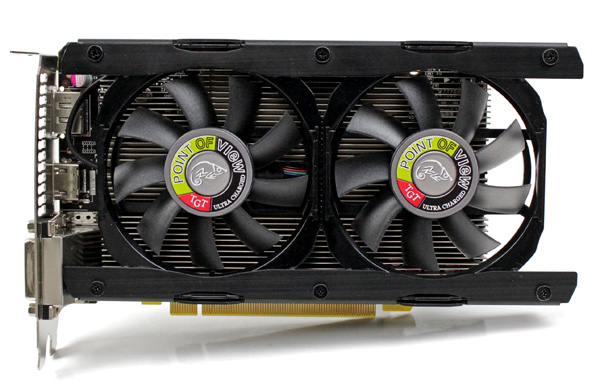
The card you see belongs to LLS series (Low Leakage Selection). This implies that the Ultra Charged’s LLS GPU should deliver superior auto-overclocking compared to the standard GTX 660. In other words, the Ultra Charged’s clock distribution should beat that of regular GPUs found on the rest of the GTX 660 pack. Of course, TGT’s tuning utility, aptly named Big Bang, will be of much help in this task. In case you didn’t know, the utility was developed by TGT exactly for this reason – making LLS chip selection easier, and you can find it, here.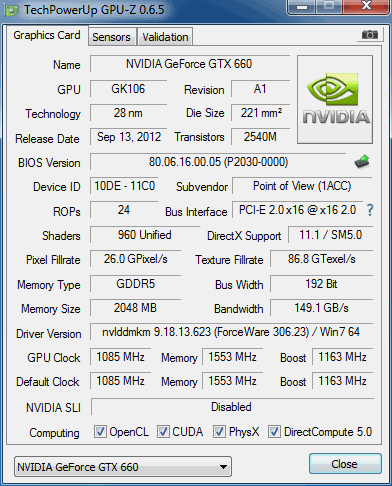
We like the packaging Point of View / TGT started using for the GTX 660/650 series, as it’s smaller than what the company uses for faster cards, but still tough enough. Nvidia made a rule that every package should have the card’s name on the side of the box, which should help customers and retailers find the right card easier. 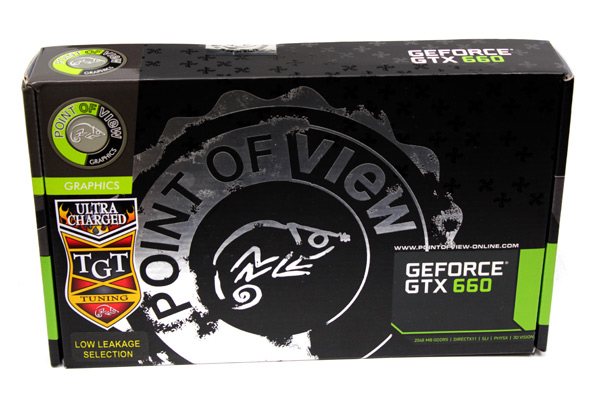
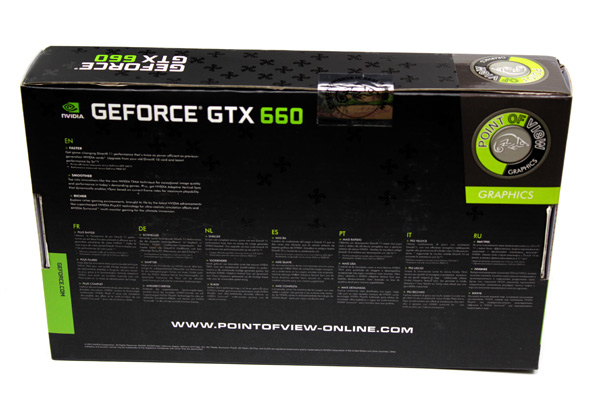
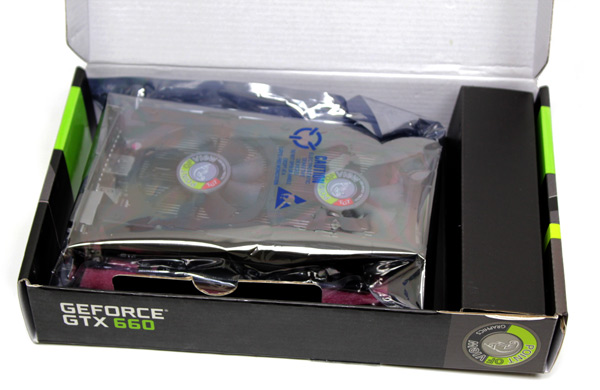
Point of View / TGT included only a driver CD and user guide for setting it up.
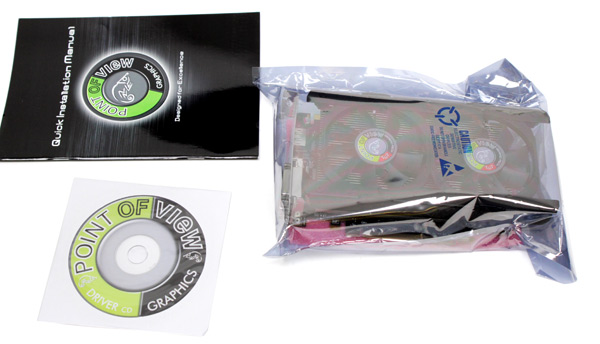
The Ultra Charged (UC) cooling is dual slot, just like the reference solution. Reference cooling employs radial, so called blower style fan, that pushes the air through the heatsink, dissipating heat from the GPU outside the case through the slits in the bracket. The UC’s cooler has two axial-flow fans. So, we’re talking about open type of cooling, where fans are positioned over and blow at the heatsink. This also means that hot air stays inside the case.
True, the reference card pushes air out of the case, and it may cause some to worry about their computer overheating, but there’s really no need to. Namely, the GK106 GPU doesn’t get very hot and your computer won’t really notice this change. Besides, it’s nothing that a few quality intake fans wouldn’t effectively nullify, and then some.
The cooler looks well made. The framework holding the fan is made of metal, which definitely looks better than plastic. However, the main part of the cooling is the heatsink, which stretches the entire length of the PCB.

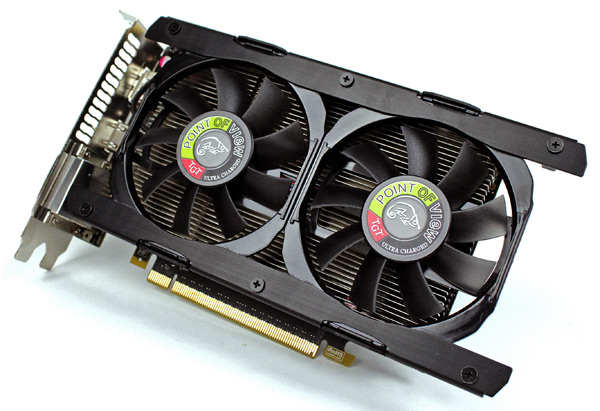
The cooler has many screws, which suggested taking the card apart will be a lengthy procedure, but we were surprised how quickly it can be done. The cooler is old school, for lack of a better word, where the cooling shroud is held in place with easily detachable clips.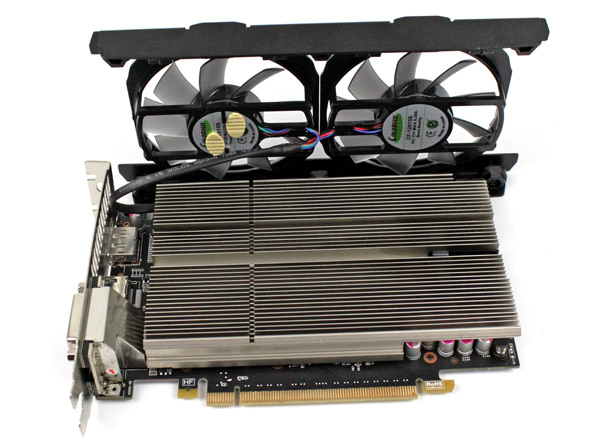
The cooler fins, as well as the aluminum plate, are tough and massive. The wide channels between the fins provide for quality airflow from the axial fans. The heatsink is one slot wide, but the fan takes up another.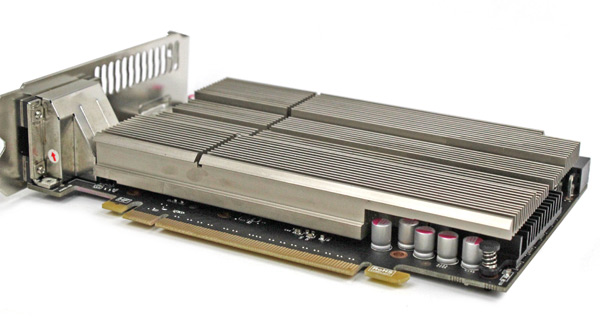
One fan is connected via four wires, while the other has three. However, Colorful gathered them into a single cable with four wires and routed it to the PCB. The fans in question are sleeve bearing fans CF-12815S, DC 12V, max 0.28A, that we haven’t seen before. RPM readouts are possible, as well as manual or automatic fan control.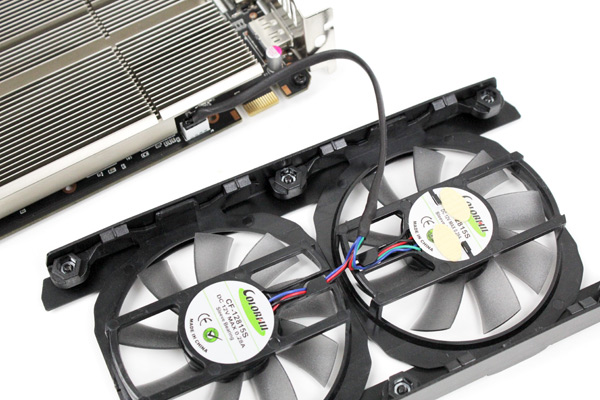
The cooler has no heatpipes but instead relies on the large copper base. The base isn’t limited to the part above the GPU, which is usually the case, but instead covers a large part of the heatsink, in order to boost performance. The heatsink is one slot wide, but the fan takes up another.
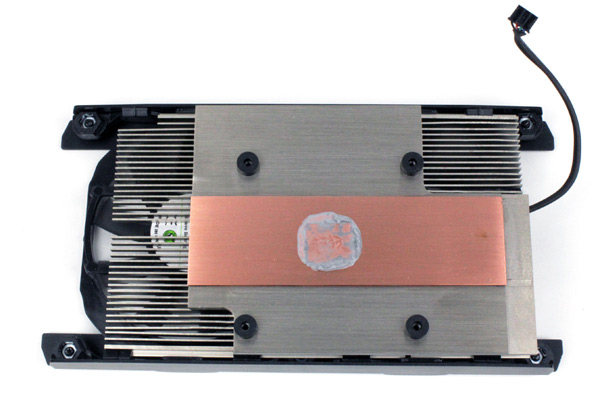
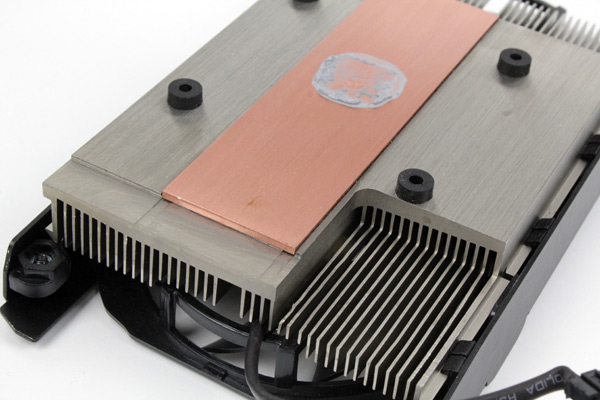
Taking off the main heatsink revealed a smaller one that provides cooling for the voltage regulation circuitry. Power circuitry on GTX 660s PCB is towards the end of the PCB, exactly the opposite of how it was implemented on GTX 670 and GTX 660 Ti cards.
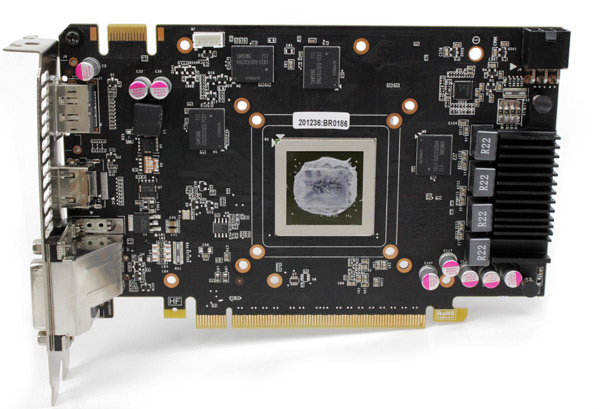
Nvidia’s specs require one 6-pin power connector since the card’s TDP is 140W. The connector is in the top corner, at the end of the card, and it’s turned upwards so that the cooler extension doesn’t get in the way when plugging the cable in.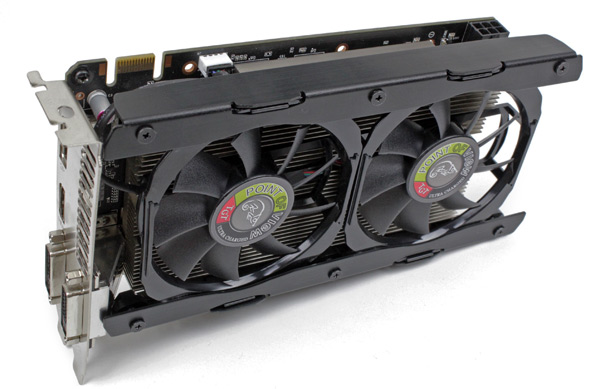
The GTX 660 has a single SLI connector, which is usual for this price segment. So, it’s possible to boost performance and use two cards in SLI mode, but not more than that. The GTX 650 Ti doesn’t feature SLI support, whereas the GTX 660 Ti supports 3-way SLI.
The PCB is 17.3cm in length but the cooler extended the GTX 660 UC’s length to exactly 20cm. The rest of GTX 660 cards that use reference blower style cooling are 24.3cm.
GTX 660 UC packs a total of 2GB of Samsung’s GDDR5 memory, in eight memory modules. Four of the modules are placed on the back. The memory doesn’t require cooling, which is pretty much confirmed by the factory overclock.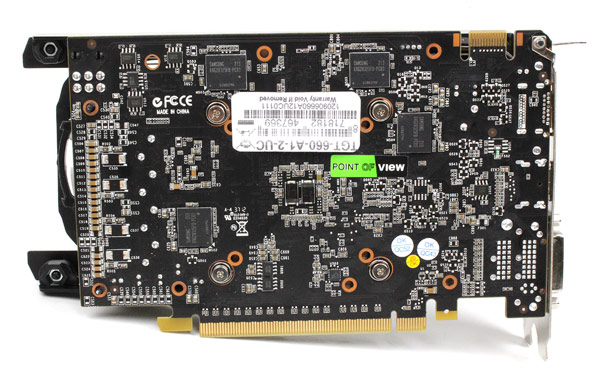
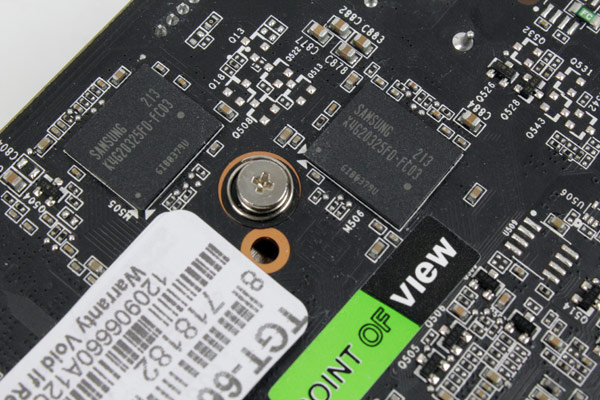
If you like plenty of video outs on your graphics card, then you should know the GTX 660 UC offers the full deal. The card can drive up to four displays simultaneously, two via dual-link DVI outs, one standard HDMI and standard DisplayPort.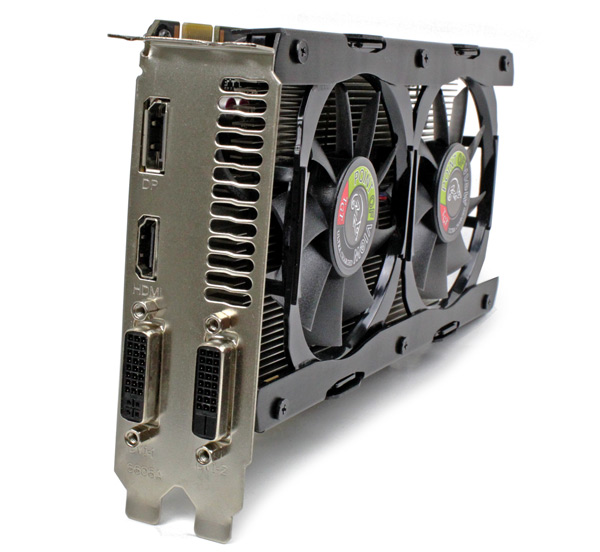
On 13th of September, when Nvidia launched the GTX 660, we had two cards – one by EVGA and one by Point of View/TGT. Unfortunately, PoV/TGT’s card was incompatible with EVGA's X79 FTW motherboard we use for our tests. EVGA says the culprit is the UEFI BIOS on GTX 660 UC graphics card, which apparently has compatibility issues with some motherboards including X79 FTW.
So, we had to find an alternative method for testing the GTX 660 Ultra Charged. The GTX 660 UC ran well on EVGA X58 FTW3 motherboard, where we compared it to EVGA's GTX 660 SuperClocked.
NOTE: Incompatibility was fixed with the new BIOS update for X79 FTW, so we’ll soon refresh our results. However, the short test we’re showing you will still paint a good picture of the GTX 660 Ultra Charged’s performance.
Below you see the pictures of the cards and a GPUZ screenshot.


Apart from the GTX 660 UC’s clocks, another thing that sets it apart from the GTX 660 Super Clocked is cooling. TGT opted for dual fan cooling, whereas the EVGA card comes with modified reference single fan cooling.
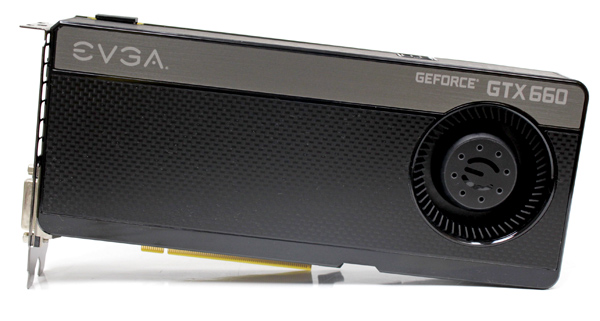
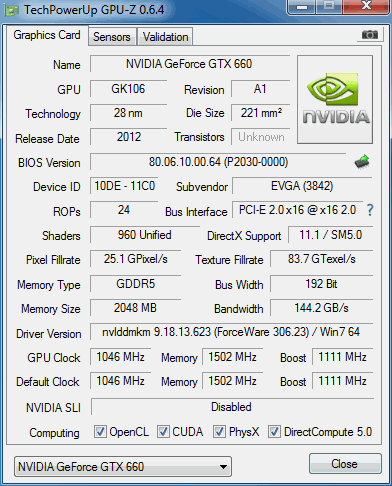
We tested Crysis 2 using Adrenaline Benchmark Tool and Borderlands 2 using FRAPS. We had PhysX effects on in Borderlands 2. Since we had two GTX 660 UC cards, we used them for SLI tests.
The GTX 660 UC beat the GTX 660 SC with a small advantage in Crysis 2. The difference is entirely on paper, because it wasn’t noticeable during gaming.
We needed some SLI juice for gaming at 2560x1600. SLI improved the score by 56 percent at 1920x1080, i.e. 88 percent at 2560x1600.
|
Crysis 2 @ Ultra 16xAf/4xAA |
1920X1080 |
2560x1600 |
|
GTX 660 UC |
60,5 |
32,7 |
|
GTX 660 UC SLI |
94,5 |
61,5 |
|
GTX 660 SC |
59,7 |
32,4 |
We turned on PhysX in Borderlands 2, since we’re comparing two Nvidia cards. We must say that many parts of the game looked much better with PhysX on.
|
Borderlands 2 @ max PhysX ON |
1920x1080 |
|
GTX 660 UC |
42 / 63 |
|
GTX 660 UC SLI |
49 / 83 |
|
GTX 660 SC |
40 / 60,8 |
The GTX 660 UC is tough enough to handle 1920x1080 with or without PhysX in Borderlands 2. CPU will be of great importance here, because the game is significantly CPU limited. Users with quad core will benefit from this greatly.
As far as SLI scaling goes, we’re not thrilled with Borderlands 2 at 1920x1080. We didn’t do the 2560x1600 test, but we supposed that SLI will provide better results once one card is out of juice.
You can check out the GTX 660 SC review, here, and see how the GTX 660 does against the competition.here,
The UC boasts “Low Leakage Selection” GPUs so we checked it out with the recently launched GPU management utility Big Bang, which shows clock distribution during auto-overclocking.
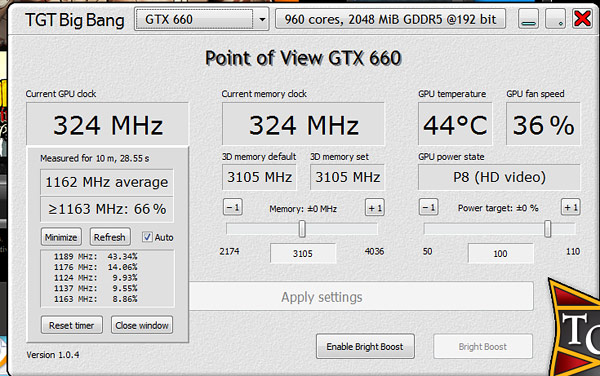
The highest GPU Boost clock on the GTX 660 UC was 1189MHz, while the GTX 660 SC’s was 1124MHz. We see a 65MHz difference in auto-overclocking, whereas the Base Clock difference is 39MHz. However, the UC’s clocks vary more often than on the SC. Below you see clocks we measured after half an hour of playing Borderlands 2.
GTX 660 UltraCharged clock distribution:
1189 MHz: 32.25%
1124 MHz: 12.30%
1137 MHz: 10.05%
1176 MHz: 9.87%
1163 MHz: 8.34%
1150 MHz: 8.30%
1110 MHz: 7.62%
1084 MHz: 6.07%
1097 MHz: 5.10%
550 MHz: 0.10%
GTX 660 SuperClocked clock distribution:
1124 MHz: 95.90%
1045 MHz: 3.65%
550 MHz: 0.34%
1110 MHz: 0.09%
1071 MHz: 0.02%
Once we tested SLI we measured even higher clocks on the second GTX 660 UC, up to 1228MHz. This means that not all LLS chips are the same either.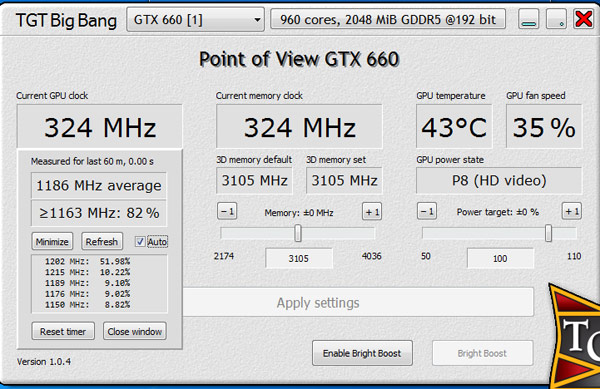
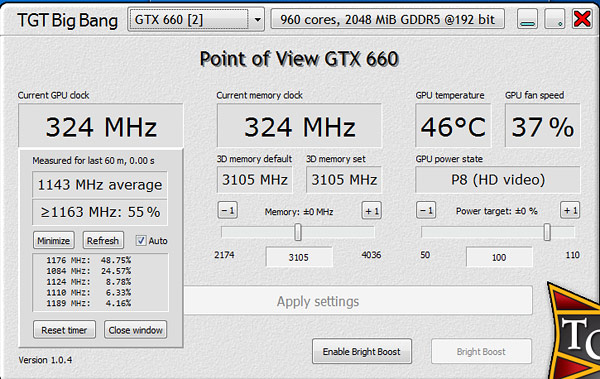
While it’s true that LLS GPUs had higher clocks, results clearly shows that it’s not a significant advantage. LLS GPU can of course be helpful in certain tests or attempts to max out GPU clocks.
Thermals and noise
As far as thermals and cooling performance goes, the GTX 660 UC’s cooling is slightly better than the GTX 660 SC’s, but when it comes to silence, it didn’t do as well. The GTX 660 UC’s fans can be heard upon starting the game, while the GTX 660 SC remained inaudible almost the entire time.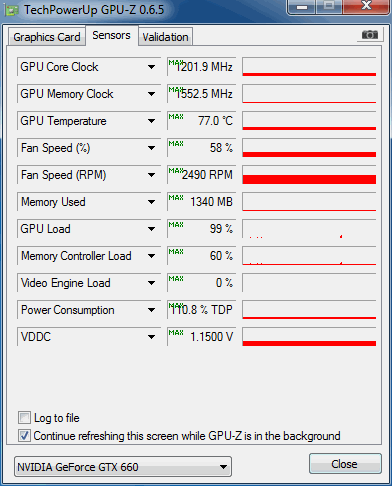
GTX 660 Ultra Charged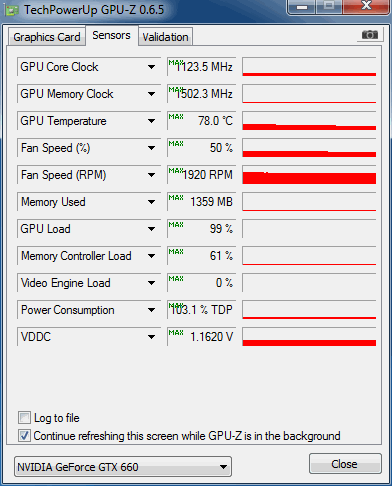
GTX 660 Super Clocked
The Ultra Charged draws slightly more than the Super Clocked, but it’s to be expected with the higher clocks.
|
Power Consumption (the whole system) |
Peak Value |
|
GTX 660 UC |
289 |
|
GTX 660 SC |
286 |
|
GTX 660 UC SLI |
409 |
Nvidia recently launched the GTX 660 that has what it takes for gaming at 1920x1080. The GTX 660 currently goes for about €200. Point of View / TGT GTX 660 Ultra Charged comes with a high factory overclock that upped the GPU by about 10 percent. At the same time, its price is higher than the price of reference cards by the same amount.
GTX 660 Ultra Charged is only 20cm, supports up to four displays and SLI. Its Low Leakage Selection GPU showed superior auto overclocking capability than the average GPU.
We’re convinced that better cooling would’ve provided for superior auto overclocking results, and remains the only thing we’d change on this card. Although it’s a dual slot fan cooler, its performance to noise ratio is not as balanced as we expected it to be. The fans are never too loud, but can be heard soon after starting a game. The GTX 660 doesn’t require extreme cooling and we’ve already seen a few silent GTX 660s.
On 13th of September, when Nvidia launched the GTX 660, PoV/TGT’s GTX 660 UC card was incompatible with EVGA's X79 FTW motherboard we use for our tests. Note that EVGA’s latest BIOS update for X79 FTW fixes incompatibility with the GTX 660 UC.
Apart from fierce competition from the likes of HD 7870, many older Nvidia cards can be found priced at about €200 and provide for pleasant 1080p gaming.
Buying a GTX 660 is definitely not a wrong choice, because we’re talking about a Kepler based graphics with good performance/watt ratio and quad display support. At the same time, if you end up wanting more, another card is always an option.



